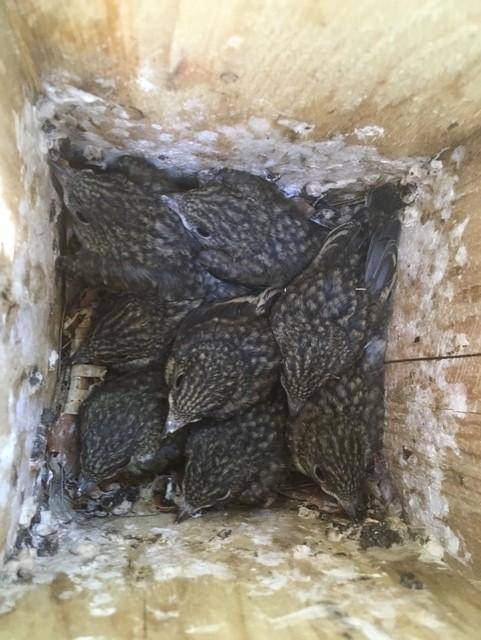UMass Amherst ecologist, part of Finnish team, used 820,000 nesting records

Credit: Finnish Museum of Natural History/Aleksi Lehikoinen
AMHERST, Mass. – In a new study out this week, a team including forest ecologist Malcolm Itter at the University of Massachusetts Amherst reports finding “clear evidence of a contraction of the breeding period” among boreal birds in Finland over a 43-year span for which good quality data were available.
The study was run by researchers within the Research Centre for Ecological Change (RCEC) at the University of Helsinki, led by Maria Hällfors with Itter and Laura Antão, all postdoctoral researchers at the time. They were joined by additional researchers at the Swedish University of Agricultural Sciences and the Finnish Museum of Natural History. Details appear in Proceedings of the National Academy of Sciences.
Itter says that for most of the 73 species studied, “we saw an advance in the beginning of the breeding period,” an average 4.6 days, and the breeding period ending earlier, an average of 6.3 days. The average breeding period contracted by 1.7 days over the period with a breeding period contraction in roughly 31 percent of all species.
The researchers report that “this pattern was most common among resident and short-distance migrating species.” This suggests that residents and short-distance migrants “may be better able to respond to increased temperatures in the spring and thus take better advantage of the earlier food and resource availability,” while “long-distance migrants that arrive later may not be able to do so,” Itter explains.
This study is unusual, as researchers looked not only at the onset of the breeding period, but also its end, and duration. They used “unique and extensive long-term bird-banding data” collected over 43 breeding seasons by a small army of experienced, dedicated banders – called ringers in Europe. Tits, thrushes, crows, owls and gulls showed the greatest changes in breeding period. “Any species that had a contraction had an earlier end to the breeding season,” Itter notes.
The authors state, “Our findings highlight the importance of quantifying phenological change across species and over the entire season to reveal shifts in the community-level distribution of bird reproduction.” And, “most importantly, our study suggests that evaluating changes throughout the season is crucial, as earlier and shorter breeding periods in birds may alter community-wide patterns of species co-occurrence and trophic relations across the boreal region.”
Hällfors, Itter and colleagues’ main hypothesis was that as conditions warm, they should see food and other resources become available earlier in the year, and because temperature is the cue for favorable conditions to rear chicks, warmer springs may cause the breeding period to shift forward.
They used a creative combination of techniques for data analysis, including a modeling framework developed for natural community data and primarily to predict species’ range shifts. The model framework was applied in this case to jointly estimate changes in the breeding period of a boreal bird community – breeding beginning, end and duration.
The model included evolutionary history information; the study found that species that shared evolutionary history shared similar breeding shifts. “From a methodological perspective, our study illustrates that a focus on quantifying phenological advances alone may mask important patterns of phenology change across the season,” authors note
Itter says the team expected to see differences in breeding period linked to distinct ecological zones across a latitudinal gradient in Finland, but found instead that “ecological zone didn’t seem to matter, changes in the beginning, duration and end of breeding did not vary strongly by ecological zone for a given species.”
###
This work was supported by the Jane and Aatos Erkko Foundation through the RCEC at the University of Helsinki and the Academy of Finland.
Media Contact
Janet Lathrop
[email protected]
Original Source
https:/
Related Journal Article
http://dx.




